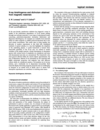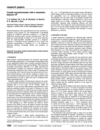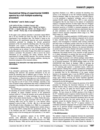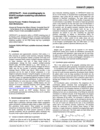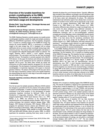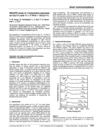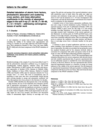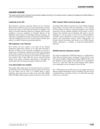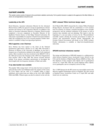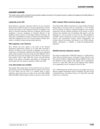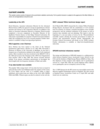issue contents
July 2001 issue

Cover illustration: Composite diagram showing the different aspects of synchrotron radiation covered by the Journal of Synchrotron Radiation
facility information
topical reviews
A theoretical framework for modelling polarization-dependent effects (dichroism and birefringence) in the transmission of X-ray beams through anisotropic magnetic materials is presented. Classical optical calculus is connected, in the X-ray case, to atomic variables, and we consider as examples magnetically ordered ferrous niobate and dysprosium borocarbide.
research papers
A 140 µeV-bandwidth monochromator for 23.880 keV X-rays is presented, and ways to improve efficiency, wavelength stability and resolution are discussed.
In this paper a new software procedure is presented, named MXAN, able to fit the XANES part (from the edge to about 200 eV) of experimental X-ray absorption data. The method is based on the fitting between the experimental spectrum and several theoretical calculations generated by changing the relevant geometrical parameters of the site around the absorbing atom. The analysis of the nickel K-edge of the nickel ion in aqueous solution is presented as an example.
The effect of the imaginary part of the Hedin–Lundqvist exchange and correlation potential on the EXAFS amplitude is systematically investigated. The HL potential is designed to model only the extrinsic losses to the EXAFS amplitude; however, we find that it gives good agreement with the total losses found experimentally.
A simple physical model employing Slater orbitals is used to calculate the energy-dependent multiple-electron excitation probability in X-ray absorption. Good agreement with experiment is found.
CRYSTALFF is an alternative utility to ATOMS containing most of the features of this standard program for converting crystallographic data to FEFF input. In addition, it offers an interface with molecular modelling programs via the PDB format and new coordination sphere analysis options.
The increasing automation of the beamlines is of particular importance fuelled by structural genomics planning and developments. The statistics of all projects show that a wide range of anomalous scattering elements are used demonstrating the need for a wide range of accessible energies, and fast and reliable energy changes.
short communications
The adsorption of 1-butanethiol on Cu(111) and  ×
×  R19.1° S/Cu(111) surfaces has been studied by S K-edge near-edge X-ray absorption fine structure spectroscopy and thermal desorption spectroscopy. Upon adsorption on clean Cu(111) surface at room temperature, butanethiolate as well as atomic sulfur is formed.
R19.1° S/Cu(111) surfaces has been studied by S K-edge near-edge X-ray absorption fine structure spectroscopy and thermal desorption spectroscopy. Upon adsorption on clean Cu(111) surface at room temperature, butanethiolate as well as atomic sulfur is formed.
letters to the editor
Free 

A new tabulation of atomic form factors is discussed briefly, extending the validity of the isolated atom approximation and serving as a baseline for near-edge solid-state and XAFS investigations. This is detailed by Chantler [J. Phys. Chem. Ref. Data, (2000), 29, 597–1048] and is the latest component of the FFAST tabulation of NIST.
current events
Free 

Free 

Free 

Free 

Free 



 journal menu
journal menu



















